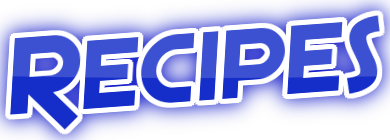Introduction
Content Accessibility Guidelines (WCAG) 2.0 defines making site content more available to people who have disabilities. Accessibility involves many disabilities|range that is wide of, including visual, auditory, physical, speech, intellectual, language, learning, and neurological disabilities. Although these instructions cover an extensive variety of problems, they’re not able to address the requirements of people who have all sorts, degrees, and combinations of disability. These directions additionally make site content more usable by older people who have changing abilities because of aging enhance usability for users generally speaking.
WCAG 2.0 is developed through the W3C process in cooperation with people and companies all over the world, with a target of supplying a provided standard for site content accessibility that fits individuals, businesses, and governments internationally. WCAG 2.0 builds on WCAG 1.0 WCAG10 built to apply broadly to various internet technologies now plus in , and to be testable with automated screening and evaluation that is human. For an introduction to WCAG, start to see the site content Accessibility recommendations (WCAG) Overview.
Online accessibility depends not just on available content but additionally on available browsers as well as other individual agents. Authoring tools also provide a essential part in online accessibility. For a summary of just how these aspects of internet development and relationship come together, see:
WCAG 2.0 Levels of Guidance
The people and businesses that utilize WCAG vary commonly and can include web site designers and designers, policy manufacturers, buying agents, instructors, and pupils. To be able to meet up with the varying requirements of the market, a few levels of guidance including general axioms, basic recommendations, testable success criteria and a rich number of enough practices, advisory strategies, and reported typical problems with examples, resource links and rule.
Concepts – towards the top are four concepts that offer the inspiration for online accessibility: perceivable, operable, understandable, and robust. See additionally comprehending the Four Principles of Accessibility.
Instructions – underneath the axioms are tips. The 12 tips supply the fundamental objectives that writers should work toward to make content more available to users with various disabilities. The principles aren’t testable, but offer the framework and objectives that are overall help writers realize the success requirements and better implement the practices.
Success Criteria – For each guideline, testable success requirements are supplied to permit WCAG 2.0 to be utilized where needs and conformance evaluation are essential such as for instance in design specification, purchasing, legislation, and contractual agreements. to make sure you can meet with the requirements of various teams and situations that are different three amounts of conformance are defined: A (cheapest), AA, and AAA (greatest). More information on WCAG amounts are located in Understanding Levels of Conformance.
Adequate and Advisory practices – For all the tips and success criteria into the WCAG 2.0 document it self, the working team has additionally documented methods. The strategies are informative and belong to two groups: those who are enough for fulfilling the success requirements and the ones which can be advisory. The advisory methods exceed what exactly is needed because of the success that is individual and enable writers target . Some advisory methods address accessibility obstacles that aren’t included in the success that is testable. Where typical problems are understood, they are additionally documented. See additionally adequate and Advisory methods in Understanding WCAG 2.0.
Many of these layers of guidance (concepts, tips, success requirements, and adequate and advisory methods) come together to deliver help with steps to make content more available. Writers ought to see and use all levels that they’re in a position to, like the advisory practices, so that you can address that is best the widest feasible selection of users.
Remember that even content that conforms during the level that is highest (AAA) available to people who have every type, levels, or combinations of impairment, especially in the intellectual language and learning areas. Writers ought to think about the full selection of practices, such as the advisory methods, along with to seek appropriate advice about present most readily useful training site content is obtainable, in terms of feasible, to the community. Metadata may help users to locate content the best option due to their needs.
WCAG 2.0 Supporting Documents
The WCAG 2.0 document is made to requirements of these who require , referenceable standard that is technical. Other documents, called supporting documents, are in line with the WCAG 2.0 document and target other essential purposes, like the capacity become updated just how WCAG could be applied with brand new technologies. Supporting papers consist of:
How exactly to Meet WCAG 2.0 – A customizable fast mention of the WCAG 2.0 that features most of the instructions, success requirements, and approaches for writers to utilize since they are developing and assessing content.
Understanding WCAG 2.0 – helpful tips to understanding and WCAG that is implementing 2.0. There is certainly a quick “Learning” document guideline and success criterion in WCAG 2.0 along with key subjects.
approaches for WCAG 2.0 – an accumulation of techniques and typical problems, each in a document that is separate features a description, examples, rule and tests.
The WCAG 2.0 papers – A diagram and description of the way the documents that are technical associated and connected.
See site content Accessibility recommendations (WCAG) Overview for the description associated with the WCAG 2.0 supporting product, including training resources regarding WCAG 2.0. Extra resources addressing subjects including the company instance for online accessibility, planning execution to enhance the accessibility of the websites, and accessibility policies are placed in WAI Resources.
Essential Terms in WCAG 2.0
WCAG 2.0 includes three crucial terms that are various from WCAG 1.0. Each of these is introduced briefly below and defined more completely in the glossary.
It is critical to keep in mind that, in this standard, the word “Web page” includes significantly more than fixed HTML pages. additionally includes the increasingly dynamic website pages being growing on line, including “pages” that will present whole digital communities that are interactive. for example, the definition of “Web web page” includes an immersive, interactive movie-like experience found at a solitary URI. For more information, see Understanding “Web webpage”.
A few success needments need that content (or specific areas of content) could be “programmatically determined.” This means the information is delivered in a way that individual agents, including technologies that are assistive can draw out and provide these details to users in numerous modalities. For lots more info, see Understanding Programmatically Determined.
Employing a technology in a real means that is accessibility supported means with assistive technologies (AT) and also the accessibility attributes of systems, browsers, along with other individual agents. Technology features is only able to be relied upon to conform to WCAG 2.0 success requirements if they’re utilized in means that is “accessibility supported”. Technology features can be utilized in many ways which are not accessibility supported (don’t make use of assistive technologies, etc.) provided that they’re not relied upon to adapt to any success criterion (in other words., the information that is same functionality can be available one other way this is certainly supported).
The meaning of “accessibility supported” is supplied within the Appendix A: Glossary part of these tips. to learn more, see Understanding Accessibility Support.
WCAG 2.0 Directions
Understanding Guideline 1.1
1.1.1 Non-text Content: All non-text content that is presented into the individual includes a text alternative that acts very same function, aside from the circumstances given just below. (Level A)
Controls, Input: then it has a name that describes its purpose if non-text content is a control or accepts user input. (relate to Guideline 4.1 for extra needs for controls is eliteessaywriters.com/paper-checker safe and content that takes user input.)
Time-Based Media: then text alternatives at least provide descriptive identification of the non-text content if non-text content is time-based media. (make reference to Guideline 1.2 for extra demands for news.)
Test: then text alternatives at least provide descriptive identification of the non-text content if non-text content is a test or exercise that would be invalid if presented in text.
Sensory: then text alternatives at least provide descriptive identification of the non-text content if non-text content is primarily intended to create a specific sensory experience.
CAPTCHA: then text alternatives that identify and describe the purpose of the non-text content are provided, and alternative forms of CAPTCHA using output modes for different types of sensory perception are provided to accommodate different disabilities if the purpose of non-text content is to confirm that content is being accessed by a person rather than a computer.







